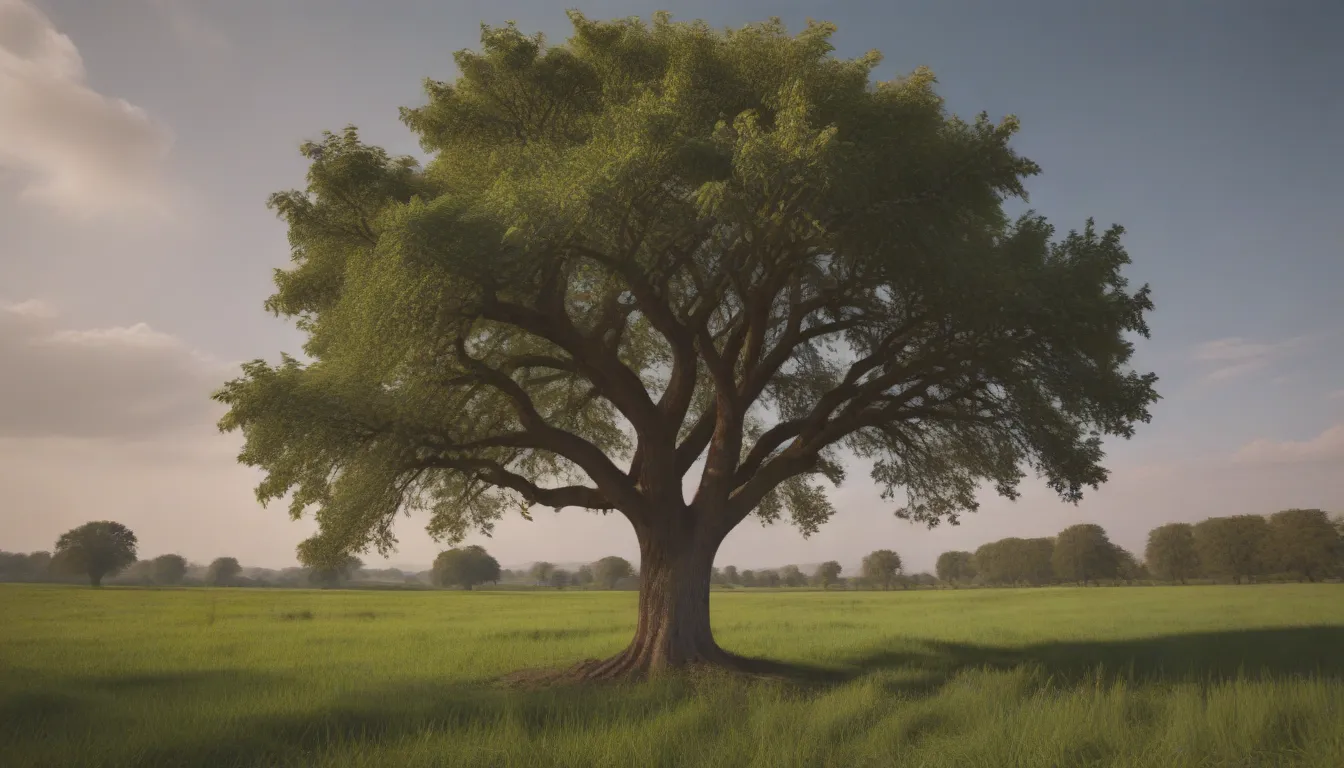The Ultimate Guide to 11 Species of Walnut Trees for North American Landscapes

If you’re considering adding a walnut tree to your property, you’re in for a treat! Walnut trees are not only beautiful additions to any landscape, but they also provide delicious nuts and support local ecology. Before you dive into planting a walnut tree, it’s essential to understand the different species available to you. In this comprehensive guide, we’ll explore 11 species of walnut trees suitable for North American landscapes, providing you with valuable information to help you make the best decision for your yard and environment.
Walnut Tree Basics
Before we dive into the various species of walnut trees, let’s start with the basics. The botanical name for the walnut tree genus is Juglans, which translates to “Jupiter’s nut.” Walnut trees belong to the Juglandaceae family, along with hickories and pecans. While the walnut fruit is often referred to as a nut, it is technically a drupe—a stone fruit with an outer fleshy skin surrounding a hardened shell protecting a seed inside.
Walnut trees are monoecious, meaning a single tree contains both male (catkin) and female (pistillate) flowers, allowing for self-pollination. To ensure optimal nut production, it’s recommended to plant walnut trees of different cultivars in groups, as typically done in walnut groves cultivated for nut production. When selecting a walnut tree for planting in your yard, consider factors such as the recommended U.S. Department of Agriculture hardiness zones, tree height, and sun exposure requirements.
Warning: Walnuts are Harmful to Many Plants
It’s crucial to choose companion plants around your walnut trees carefully, as walnuts can be harmful to certain species.
Now, let’s explore the 11 species of walnut trees suited for North American landscapes.
Andean Walnut (Juglans neotropica)
- Native Area:
- USDA Growing Zones:
- Height:
- Sun Exposure:
The Andean walnut is a slow-growing tree known for its grooved, red-brown bark and oval-shaped canopy. It features large leaves with pointed, serrated leaflets arranged in pairs. Regionally, this tree is also referred to as Columbian walnut, Ecuador walnut, or Peruvian walnut. It is usually grown for nuts or its highly prized wood and is considered an endangered species in its native range.
Arizona Black Walnut (Juglans major)
- Native Area:
- USDA Growing Zones:
- Height:
- Sun Exposure:
In moist conditions, the Arizona black walnut features a single, stout trunk, while in drier conditions, it may have several slender trunks. The leaves are 7 to 14 inches long and pinnately compound. This tree, also known as New Mexico walnut, mountain walnut, or river walnut regionally, thrives in moist soil and seeks out ravines and river beds in its native range.
Black Walnut (Juglans nigra)
- Native Area:
- USDA Growing Zones:
- Height:
- Sun Exposure:
The black walnut is cultivated for its distinctive and desirable taste, as well as its hard, attractive wood. This tree has sharply ridged gray-black bark and dense, rounded crowns. The leaves can grow up to 24 inches long and consist of lance-shaped leaflets. Autumn color is a relatively bland yellow. Also known as the American walnut or eastern black walnut, this tree has several cultivars developed for improved nut quality or wood.
How to Grow and Care for Black Walnut Trees
(Insert video or infographic on caring for Black Walnut trees)
Butternut (Juglans cinerea)
- Native Area:
- USDA Growing Zones:
- Height:
- Sun Exposure:
The butternut is a deciduous tree that can grow up to 60 feet tall. It resembles the black walnut but is smaller with less fissured bark, fewer leaflets per leaf, and smaller, oval-shaped nuts. Once common in North America, the butternut has become increasingly rare due to a spreading canker disease. It may also be known as oilnut, white walnut, or long walnut in different regions.
Brazilian Walnut (Juglans australis)
- Native Area:
- USDA Growing Zones:
- Height:
- Sun Exposure:
The Brazilian walnut is a spreading deciduous tree that can reach up to 75 feet in width. It produces high-quality lumber, and both immature and mature fruits are consumed. While rarely grown in North America, it is sometimes planted as an ornamental shade tree in tropical areas.
California Black Walnut (Juglans californica)
- Native Area:
- USDA Growing Zones:
- Height:
- Sun Exposure:
The California black walnut can be a large shrub with one to five main stems or a small, single-trunked tree. It has deeply channeled thick bark and pinnately compound leaves with hard-to-remove small nuts. This plant is sometimes referred to as the southern California black walnut.
English Walnut (Juglans regia)
- Native Area:
- USDA Growing Zones:
- Height:
- Sun Exposure:
The English walnut, known for providing edible walnuts sold in stores, has a history dating back to stories involving Alexander the Great. This Old World walnut tree has smooth olive-brown bark that turns silvery gray and rough as it ages. The compound leaves cluster in 5 to 9 lance-shaped leaflets, with relatively thin-shelled nuts containing richly flavorful seeds.
Northern California Black Walnut (Juglans hindsii)
- Native Area:
- USDA Growing Zones:
- Height:
- Sun Exposure:
The Northern California black walnut, also known as Hind’s black walnut, is a tall tree with a controversial conservation status due to hybridization with orchard trees, urbanization, and habitat loss. Some authorities consider it a variation of the California walnut, named Juglans californica var. hindsii.
Japanese Walnut (Juglans ailantifolia)
- Native Area:
- USDA Growing Zones:
- Height:
- Sun Exposure:
The Japanese walnut is a deciduous tree with light grey bark, producing yellow-green male flowers and attractive pink or reddish female flowers. Its large leaves are pinnately compound, with 11 to 17 lighter green leaflets. This tree is also known as heartnut or siebold walnut.
Manchurian Walnut (Juglans mandshurica)
- Native Area:
- USDA Growing Zones:
- Height:
- Sun Exposure:
The Manchurian walnut is an exceptionally hardy tree cultivated as an ornamental in colder temperate regions worldwide. It has relatively small, edible nuts that are difficult to extract, and its compound leaves feature 7 to 19 leaflets.
Little Walnut (Juglans microcarpa)
- Native Area:
- USDA Growing Zones:
- Height:
- Sun Exposure:
The little walnut is a large shrub or small tree found in Southwestern regions, commonly growing around stream beds and ravines. Its small nuts, about 1 inch wide, give it the name Texas walnut, Texas black walnut, or Mexican walnut. This plant has narrow leaflets, with bark ranging from gray to dark brown and developing deep fissures over time.
Benefits of Walnut Trees
Besides providing delicious nuts, walnut trees play a crucial role in supporting local ecology. They host numerous moth and insect species that provide food for native bird species. Walnut trees also attract various butterfly species that aid in pollinating the area’s flora.
Growing Tip
Walnut trees thrive best in full sun and require moist but well-drained soil. They may struggle in regions with insufficient rainfall, necessitating diligent irrigation.
Remember, you cannot eat walnuts straight from the tree. The green husks on the tree contain unripe walnuts that need to be husked and dried to reveal the edible nut inside. Patience is key when harvesting and enjoying fresh walnuts.
In conclusion, adding a walnut tree to your landscape not only enhances its beauty but also provides you with a sustainable source of nuts and benefits local wildlife. By understanding the different species of walnut trees and their unique characteristics, you can select the best option for your yard’s specific needs. Happy planting!





